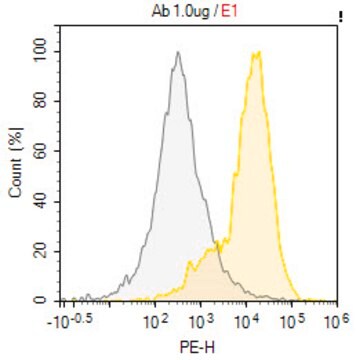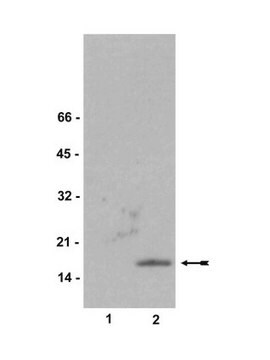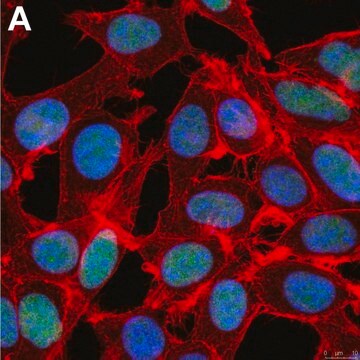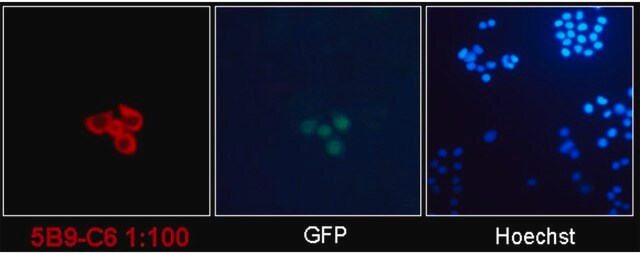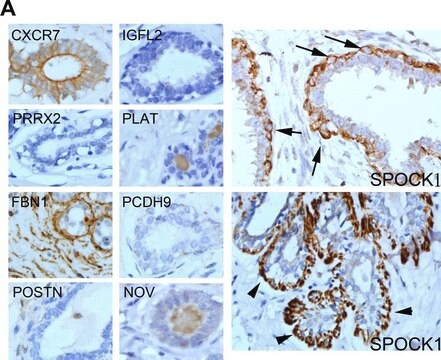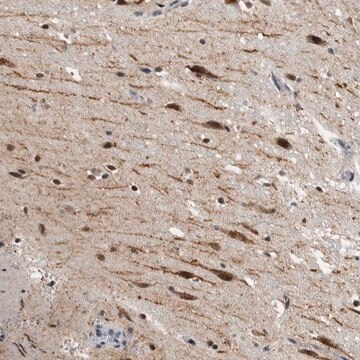MABF3171
Anti-CXCR7 Antibody, clone 10D1
Sinônimo(s):
Atypical chemokine receptor 3, C-X-C chemokine receptor type 7, CXC-R7, CXCR-7, Chemokine orphan receptor 1, G-protein coupled receptor 159, G-protein coupled receptor RDC1 homolog, RDC-1
About This Item
Produtos recomendados
fonte biológica
mouse
Nível de qualidade
forma do anticorpo
purified antibody
tipo de produto de anticorpo
primary antibodies
clone
10D1, monoclonal
reatividade de espécies
human
embalagem
antibody small pack of 100
técnica(s)
flow cytometry: suitable
inhibition assay: suitable
Isotipo
IgG2a
sequência de epítopo
Extracellular domain
nº de adesão de ID de proteína
nº de adesão UniProt
Informações sobre genes
human ... ACKR3(57007)
Especificidade
Imunogênio
Aplicação
Evaluated by Flow Cytometry in Raji cells.
Flow Cytometry Analysis: 1 µg of this antibody detected CXCR7 in one million Raji cells.
Tested Applications
Inhibition Assay: A representative lot inhibited the binding to the principal ligand CXCL12 to CXCR7. (Patent ID: WO2010141986A1).
Flow Cytometry Analysis: A representative lot detected CXCR7 in Flow Cytometry applications (Patent ID: WO2010141986A1).
Note: Actual optimal working dilutions must be determined by end user as specimens, and experimental conditions may vary with the end user
Descrição-alvo
forma física
Reconstituição
Armazenamento e estabilidade
Outras notas
Exoneração de responsabilidade
Não está encontrando o produto certo?
Experimente o nosso Ferramenta de seleção de produtos.
Código de classe de armazenamento
12 - Non Combustible Liquids
Classe de risco de água (WGK)
WGK 2
Ponto de fulgor (°F)
Not applicable
Ponto de fulgor (°C)
Not applicable
Certificados de análise (COA)
Busque Certificados de análise (COA) digitando o Número do Lote do produto. Os números de lote e remessa podem ser encontrados no rótulo de um produto após a palavra “Lot” ou “Batch”.
Já possui este produto?
Encontre a documentação dos produtos que você adquiriu recentemente na biblioteca de documentos.
Nossa equipe de cientistas tem experiência em todas as áreas de pesquisa, incluindo Life Sciences, ciência de materiais, síntese química, cromatografia, química analítica e muitas outras.
Entre em contato com a assistência técnica